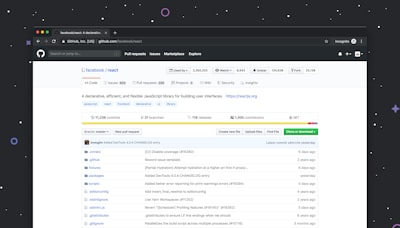In the dynamic world of web development, understanding the intricacies of frontend development is imperative for designing performant, user-friendly interfaces. Our today’s journey handles modern HTML5 APIs, JavaScript features, CSS magic, and complex tools which hold power to shape the art of frontend development.
Experience the compelling universe of JavaScript ES6. The introduction of let and const for better scope management and Promises and Async/Await for coping with the asynchronous nature of JS, are a few among those.
const fetchData = async () => {
try {
const response = await fetch('https://api.example.com/data');
const data = await response.json();
console.log(data);
} catch (error) {
console.log('Error:', error);
}
}
fetchData();
The use of fetch API, Arrow Functions, and Template Literals can also be observed in the above-mentioned example1.
Embedding JS into modern frameworks such as Angular, React, and Vue, provides a vast area of exploration2. GitHub provides a host of examples, take this simple Vue instance3:
new Vue({
el: '#app',
data: {
message: 'Hello Vue!'
}
})
Dr. Axel Rauschmayer4 states “Vue.js is less opinionated than Angular, and that allows you to structure your apps the way you want them”.
The modern scene is not just about JS, there is a charm in the world of CSS too. The introduction of CSS Grid and Flexbox have revolutionized the layout designing process5.
.container {
display: grid;
grid-template-columns: auto 1fr auto;
grid-gap: 10px;
}
Moreover, CSS Variables has enhanced the flexibility in maintaining and swapping styles6.
:root {
--main-color: #c06;
}
body {
background-color: var(--main-color);
}
Then comes the powerful build tools like Webpack and Babel which takes care of JS module bundling and ES6 syntax transformation respectively. Explore this starter webpack configuration7 from GitHub:
module.exports = {
entry: './src/index.js',
output: {
path: path.resolve(__dirname, 'dist'),
filename: 'bundle.js'
},
module: {
rules: [
{ test: /\.js$/, exclude: /node_modules/, loader: "babel-loader" }
]
}
};
“Sweat the details. It’s worth it."8, Brent Simmons famously coined this phrase, and this stands true when it comes to frontend performance9. Lazy loading components, bundling and minifying resources, prefetching and caching data, utilizing requestAnimationFrame for animating elements are some practices1011 to consider in pursuit of performance.
Despite a sophisticated toolset, frontend development does have its drawbacks. The learning curve for new frameworks and tools12, browser compatibility13, and keeping up with the rapidly evolving ecosystem14 are some major concerns.
Nonetheless, frontend development is a fascinating and continual learning process. A high degree of patience, persistence, and practice can make you adept in the field. It is an art that develops with time, influenced by the devotion of its artist.
References:



